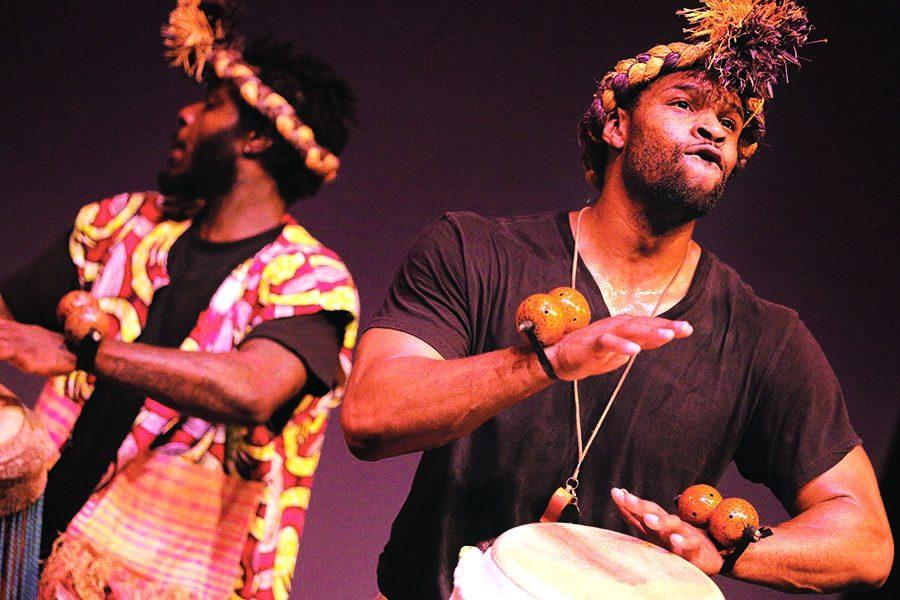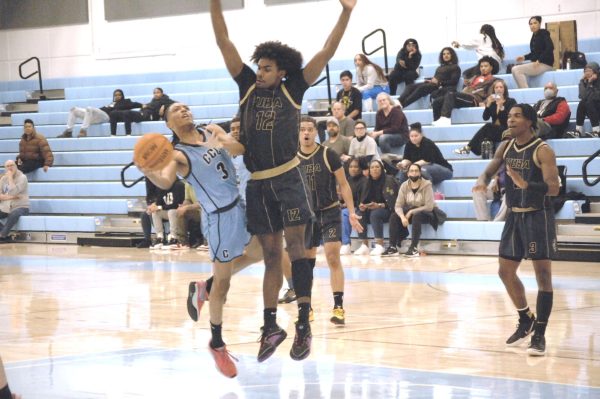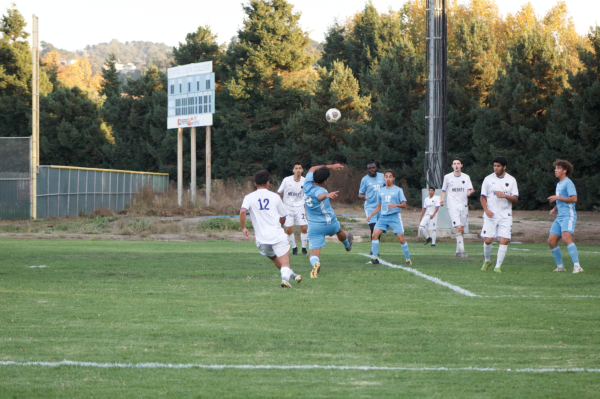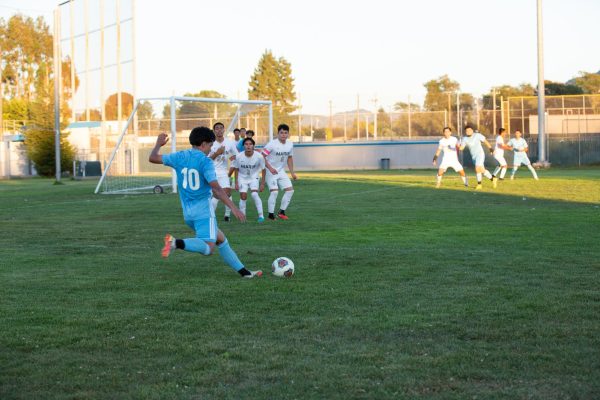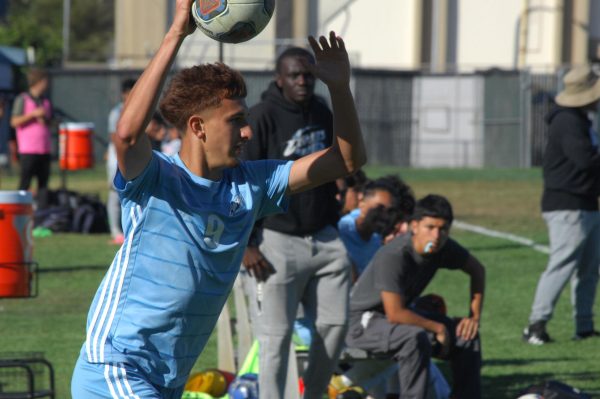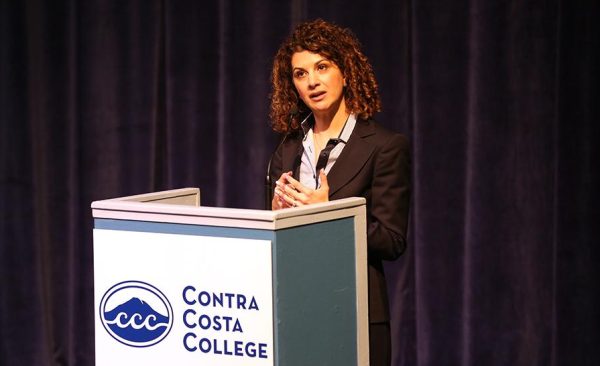Percussion, language laud African heritage
February 14, 2017
Ingenuity, expression and the persistent spirit of black excellence merged to explore the long lasting impact that African culture has on American society at the African Heritage Month celebration held Feb. 9 in the Knox Center.
While most Black History Month celebrations focus on African-American life post-slavery, this program, titled “From African Empires to Congo Square in the U.S.,” explained the unique cultural influences that blended to become the modern African-American experience.
“Often times people focus on slavery and nothing beyond that,” history department Chairperson Manu Ampim said. “But like a good student activist said — ‘If you start your history at slavery the best you can be is a good slave.’”
Ampim gave a presentation on his archaeological studies in Central Africa and offered primary source information about the “cultural complex” that still exists there in many regions.
He then bridged the gap between ancient Africa and the experiences and contributions by blacks after slavery.
Congo Square, located in New Orleans, Louisiana, was a meeting place for enslaved Africans in the colonial era of the 18th century.
Although public gatherings were forbidden, people braved beatings and threats of death to congregate and share experiences, accompanied with food, music and dance.
The area was given the name because of the large number of Africans from the Congo Kingdom who were bought and sold in the small French settlement.
Mistress of ceremonies, Contra Costa College student and African-American studies major Lavonia Bobo, seamlessly steered the celebration between presenters who ranged from current and former students, staff members, traditional performers and professors.
As a tutorial on the origin of Black History Month, CCC graduate and Cal State-East Bay master’s program participant Lacretia Robinson explained Dr. Carter G. Woodson’s vision for creating the now month-long recognition of the contributions that black people made and continue to make in society.
Robinson also cited the calming influence Africana/Chicano/ethnic studies department Chairperson Carolyn Hodge provided her as a professional returning to school later in life to foster a career change.
Before examining the cultural melting pot that was Congo Square, Ampim reflected on the similarities between ancient African empires through his first person experiences while on sabbatical in Northern and Central Africa.
The professor returned from Africa three days before the spring semester began.
“We’re going beyond the slavery barrier, in fact, beyond the Atlantic Ocean,” he said. “We are going to look at African high culture. Documentation beats conversation every day of the week.”
His photo documentation of current tribesmen adorned with leopard skins and ostrich feathers, coupled with his collection of millennia-old artifacts depicting similar traditional garb, highlighted a history of merging African cultures over vast time and distance.
Following Ampim’s presentation, Bobo spoke to the importance of learning in an environment in which the professor has first hand knowledge of his subject.
Many of the photos that Ampim uses as teaching aides are often stills from his own fieldwork at actual archeological sites.
Crowd favorites and staples of the African Heritage Month celebration, the drum and dance performers Kiazi Malonga and the Fua Dia Congo, filled the Knox Center with an infectious rhythm and energy that left no attendee sitting still.
Always an inspiration for crowd participation, the group enlisted 16 members of the audience to join the stage show.
The mix of students and instructors swayed rhythmically as the drummers put on a display of traditional African showmanship that left the crowd in awe and the performers drenched in sweat.
As the intertwining traditions of ancient African kingdoms and current African kings of today were explained by Ampim, the link to Congo Square and the continued exchange of culture was explained by Louisiana native and CCC dance instructor, Latanya Tigner.
Tigner, a choreographer by trade, has intimate knowledge of African dance and used the traditional dances by women from the Congo kingdom and Uganda to highlight the way merging cultures create fresh ideas.
“They often gathered on levees, in backyards, on plantations or in other public parks,” Tigner said. “Through numerous permitting and forbidding circles, city ordinances that dated back to the colony’s inception, despite the hangings and harassment — they gathered.”
From French occupation to Spanish rule and then American domination, it has always been known to us as Congo Square, she said.
Following her presentation, Tigner summoned 11 volunteers along with Fua Dia Congo to the stage, putting into practice the moves that were explained to the crowd.
“I went up to the stage because that’s what I do — dance,” biology major Iyannah Watt said. “When I heard the drums I was moving in my seat, so why not go up.”
Some seemed perfectly in touch with their African roots while other volunteers should look to enroll in one of Tigner’s dance courses.
While dance volunteers found their seats, Hodge emerged at the podium and students froze as if unprepared for a pop quiz.
She reminded students to apply for scholarships like the AASA scholarship, the B. Wayne Daniels or African-American Studies Scholarship, all of which have a March 2 application deadline.
The professor also encouraged attendees to speak with Dr. Ampim about the study abroad trip to ancient Egypt happening July 14-28.
Hodge’s last announcement, which got an unexpectedly boisterous applause, was for “Celebrating Success” CCC’s black graduation which takes place on May 20.


